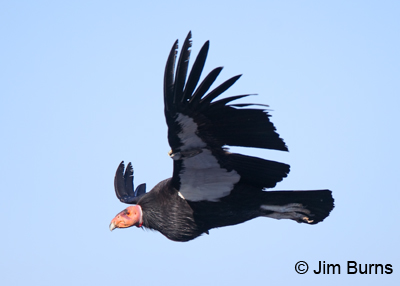
The ranger strolls by at 2:45 and I query him. Yes, he says, the condors have been around the South Rim for a couple weeks now, but he has not seen any today. He corroborates what I have gleaned from another ranger. Three o'clock to five o'clock, late afternoon, seems to be the most predictable time this early in South Rim "condor season" which begins in early March and runs, some years, through October. He glances at my telephoto lens, divines that I will not be coming to his program, and wishes me good luck.
The tourists are eyeballing my lens. Forgive me for sounding elitist, but a "tourist" is a person who scurries around the country, or indeed the world, checking off popular destinations much like the "twitchers" who chase rare or vagrant birds to add to their lifelist. Spend multiple days, make multiple trips, hike the Canyon, do the museums, study the geology, learn some Navajo culture. These are not the stuff of "tourism."
These musings are unceremoniously interrupted by laughter and the odd sense that I am its object. I turn to see that a group of oriental, um . . . tourists, have gathered on the pathway behind me, staring and pointing at my big lens. Seeing that I have noticed, they all smile. Though one of the natural wonders of the world beckons just beyond, they are taking pictures of me and my lens. I smile back, knowing they are laughing with me. Behind my dark glasses, I roll my eyeballs. I am laughing at them.
I turn back to my vigil and glance at my watch. It is 3:45. The ranger talk, down the path to the west, is well under way. Far out beyond El Tovar a skyspeck morphs into a large, dark bird. It is not flying with purposeful wingbeats like the ubiquitous Canyon ravens. It is soaring, effortlessly, riding thermals rising off the rim. I bring the lens up as the specter, now huge, reaches the flagpole.
I figure in the rapidly closing distance between the condor and me there are upwards of 200 people. None sees the bird. Many do not know what a condor is or the significance of its comeback here from the brink of extinction. Most are peering down into the Canyon, licking their ice cream, or watching me as I follow focus, hand holding the lens. The sun is directly behind me as the condor passes directly in front of me, at eye level. The camera speaks in bursts. I shout at the ranger. Tourist heads turn. Tourist eyes follow the lens out over the void, seeing at last the giant bulb of pink head and the huge dark planks of wings with their two foot long primary fingers. This is the Canyon's only true non-tourist.
This avian wonder, this myth from an ancient world, renders the word "awesome" innocuous. I capture its image. I know I was born a hundred years too late.